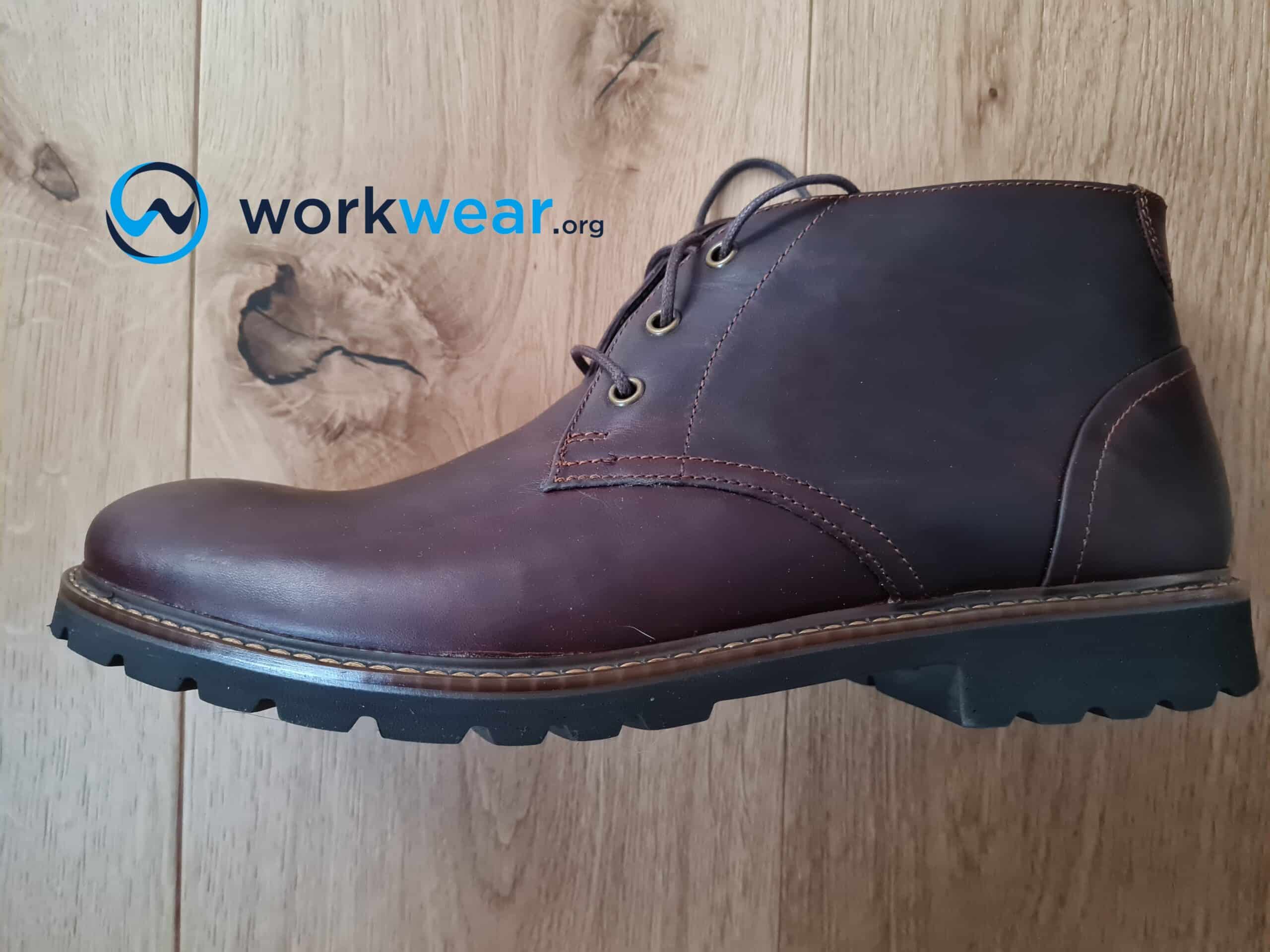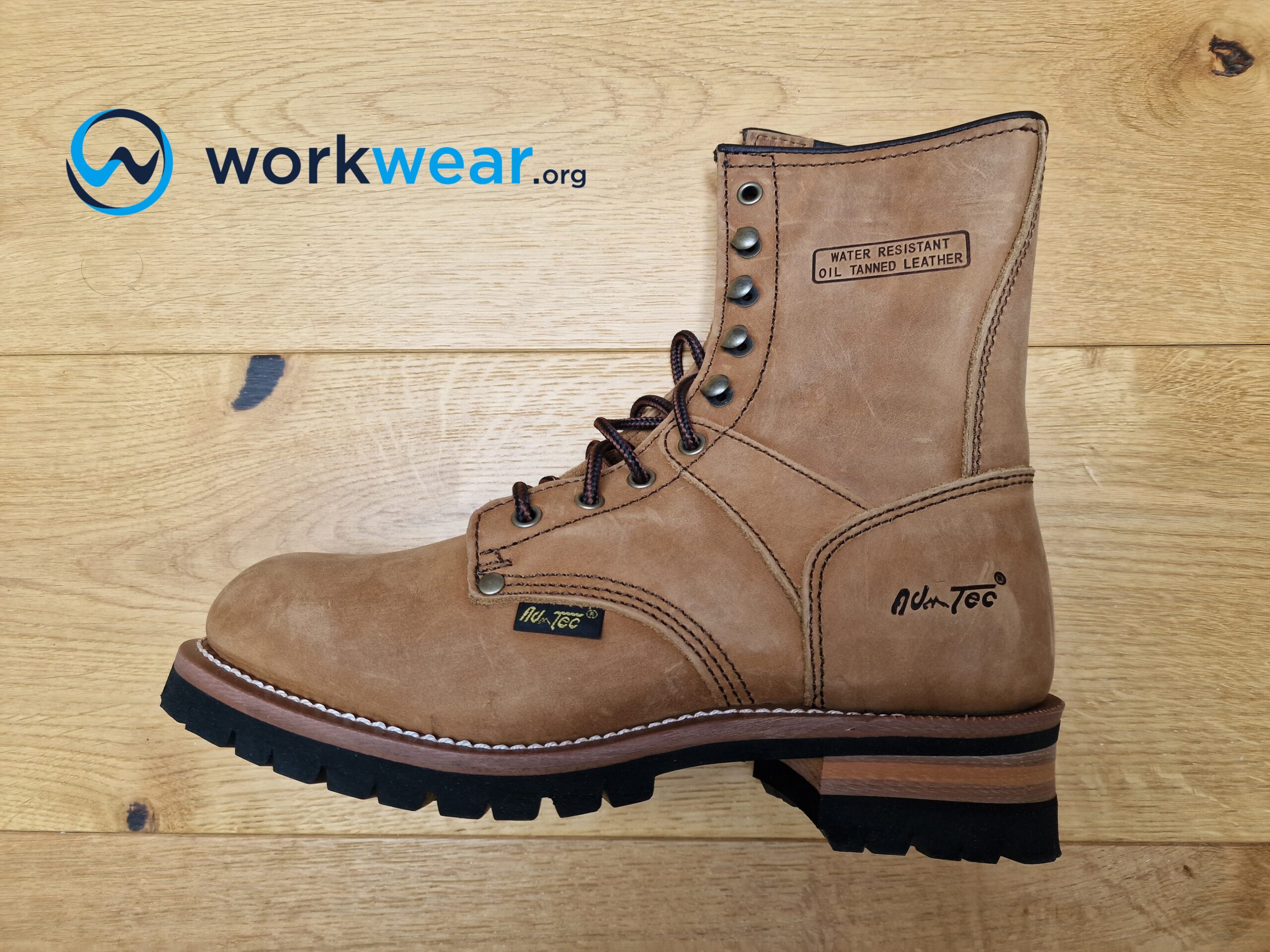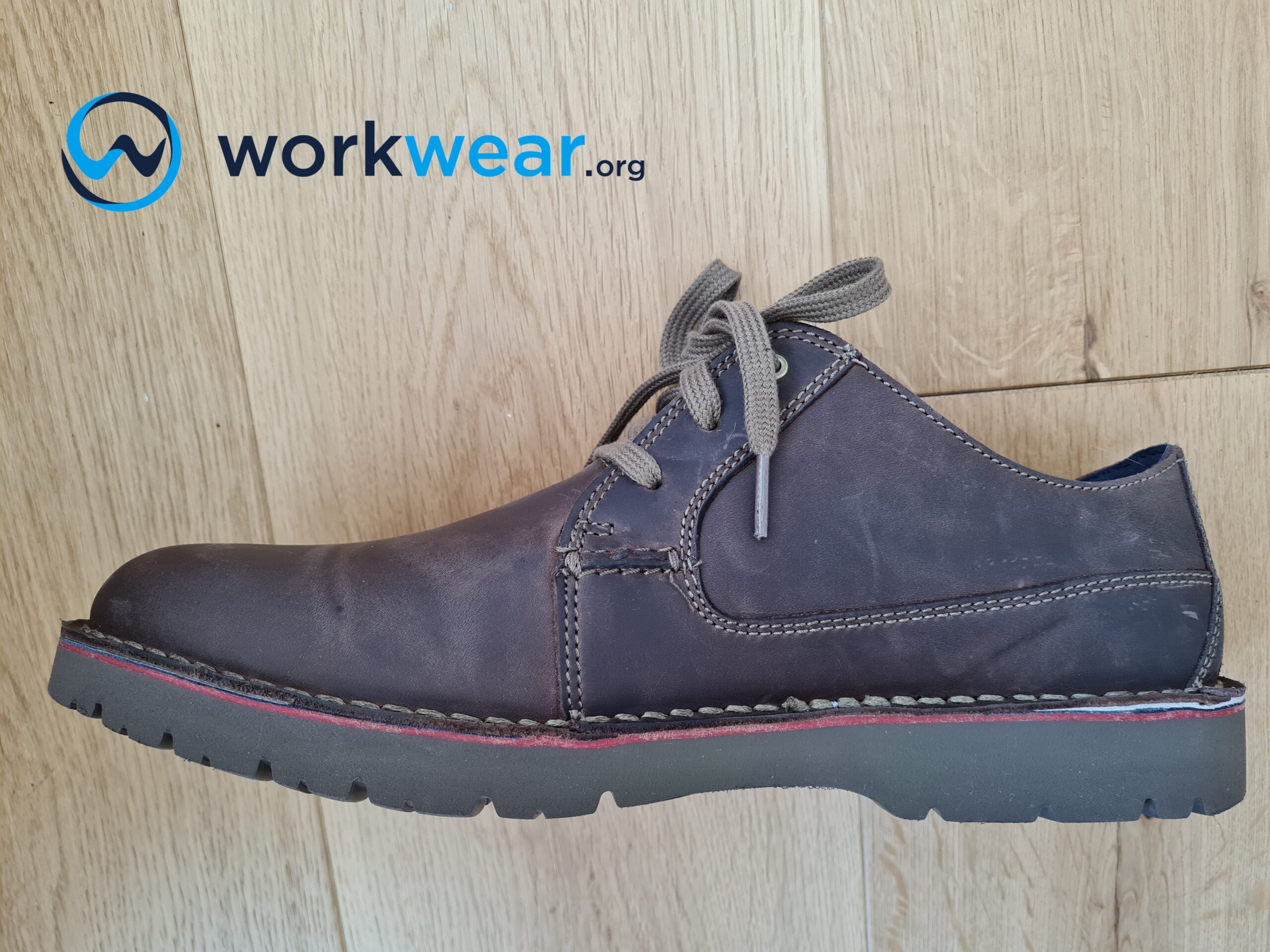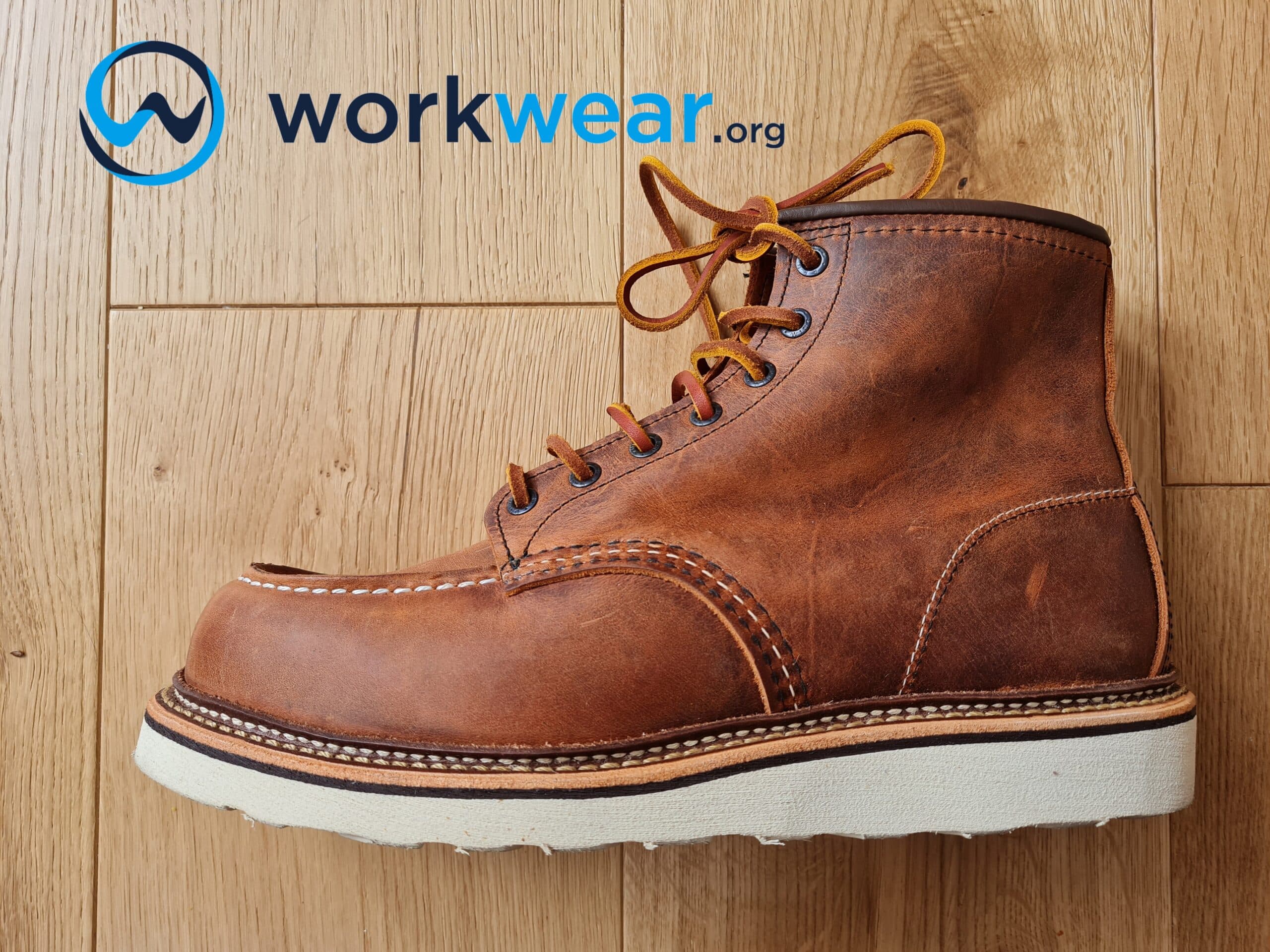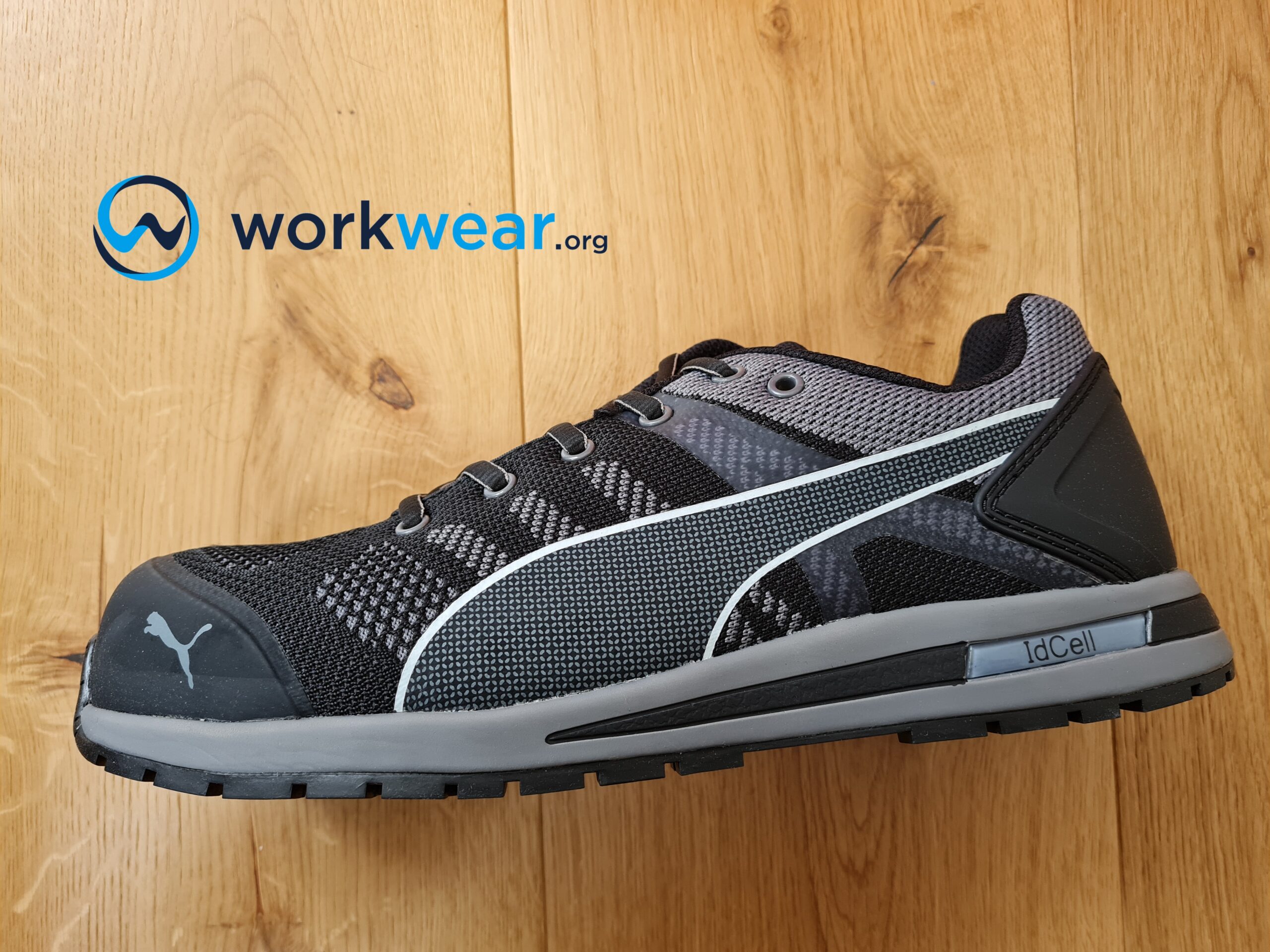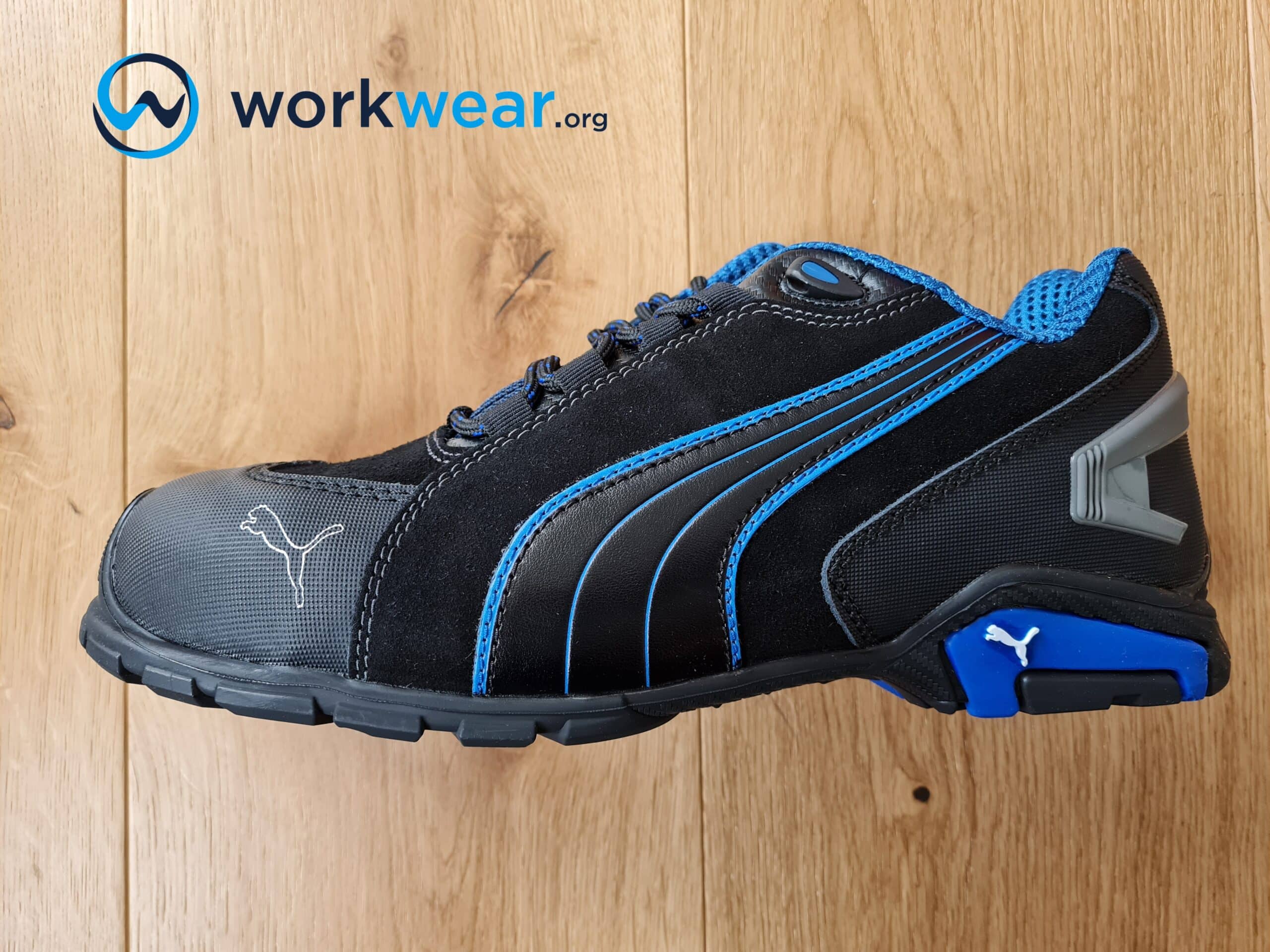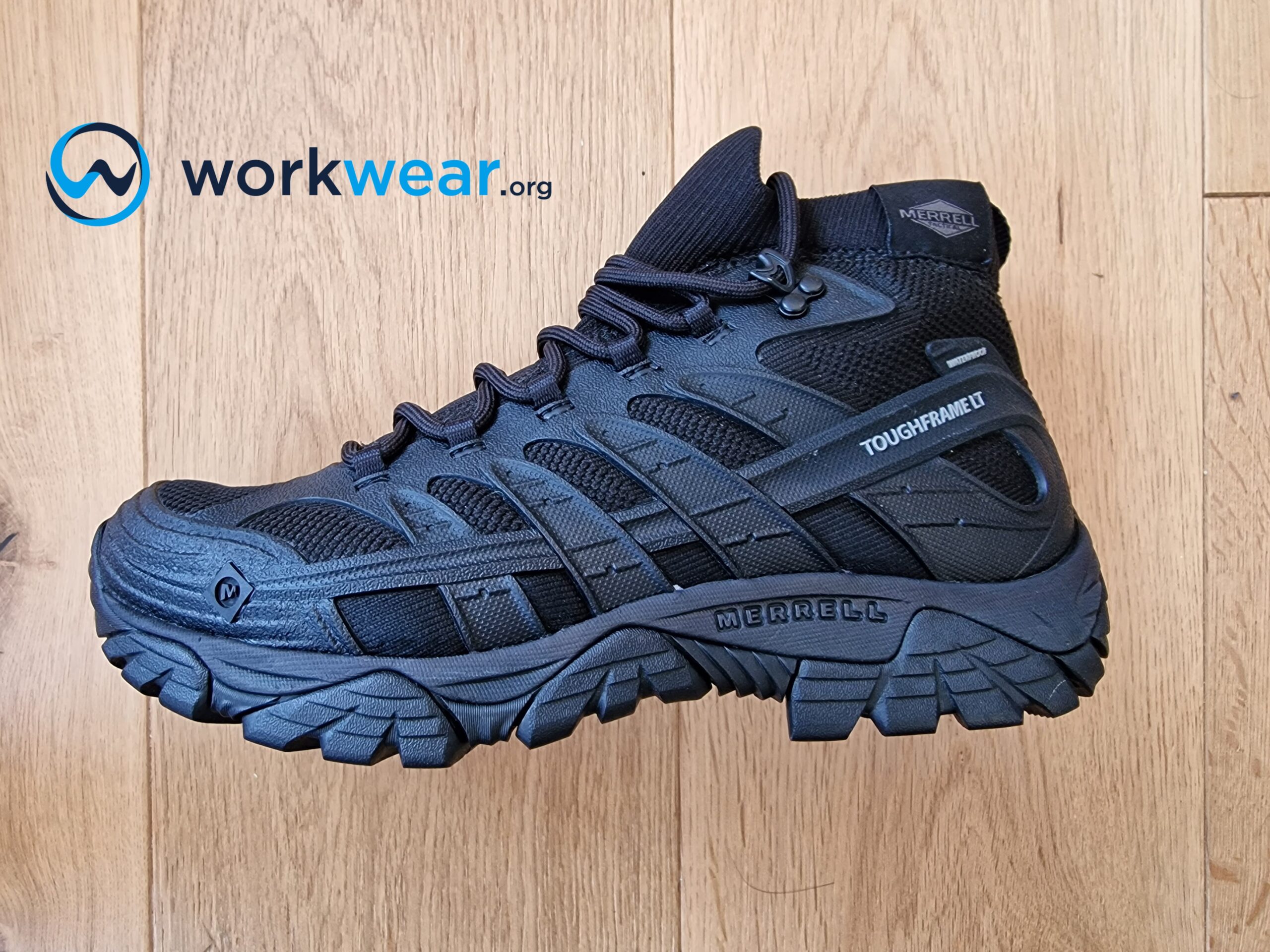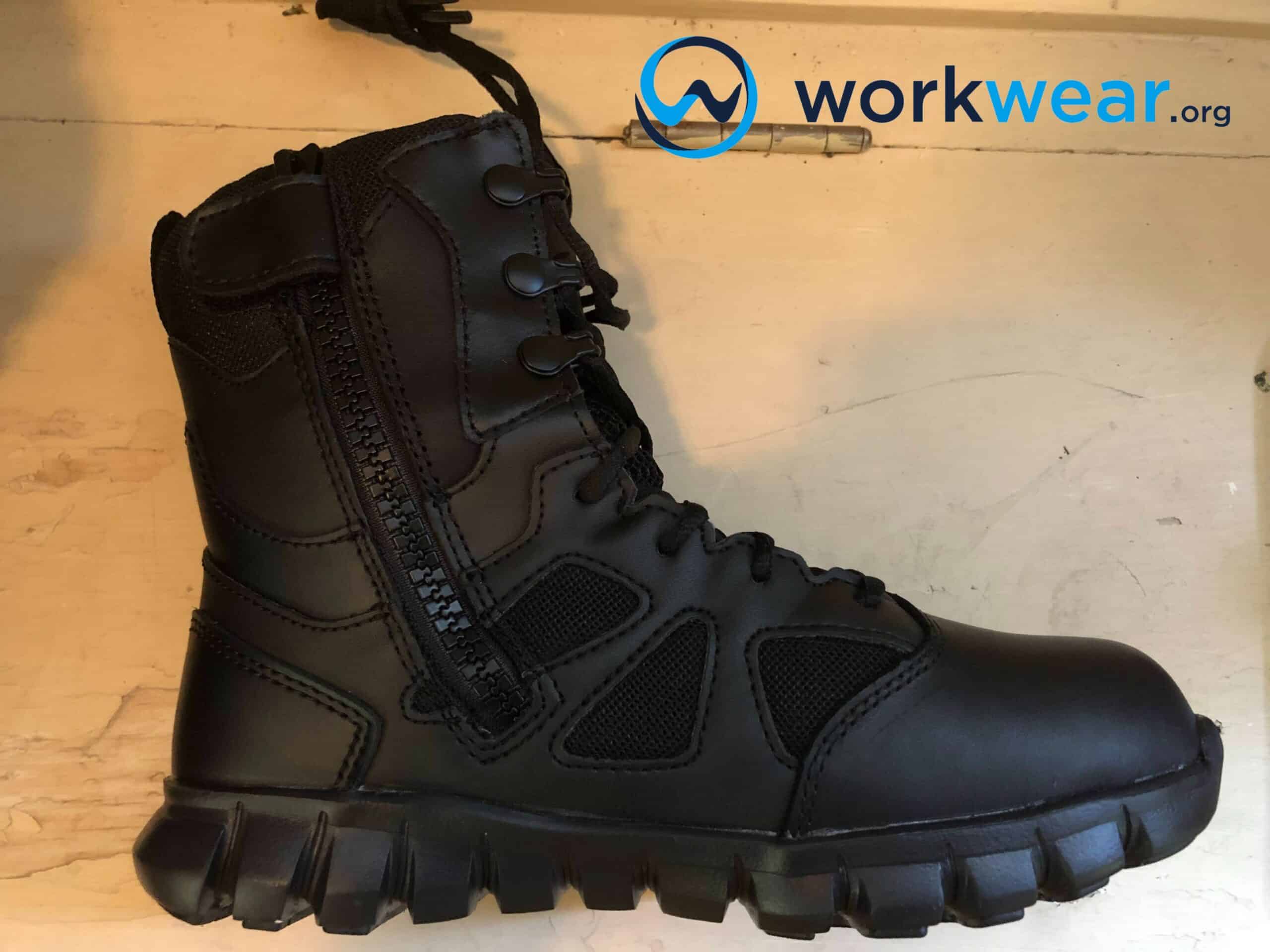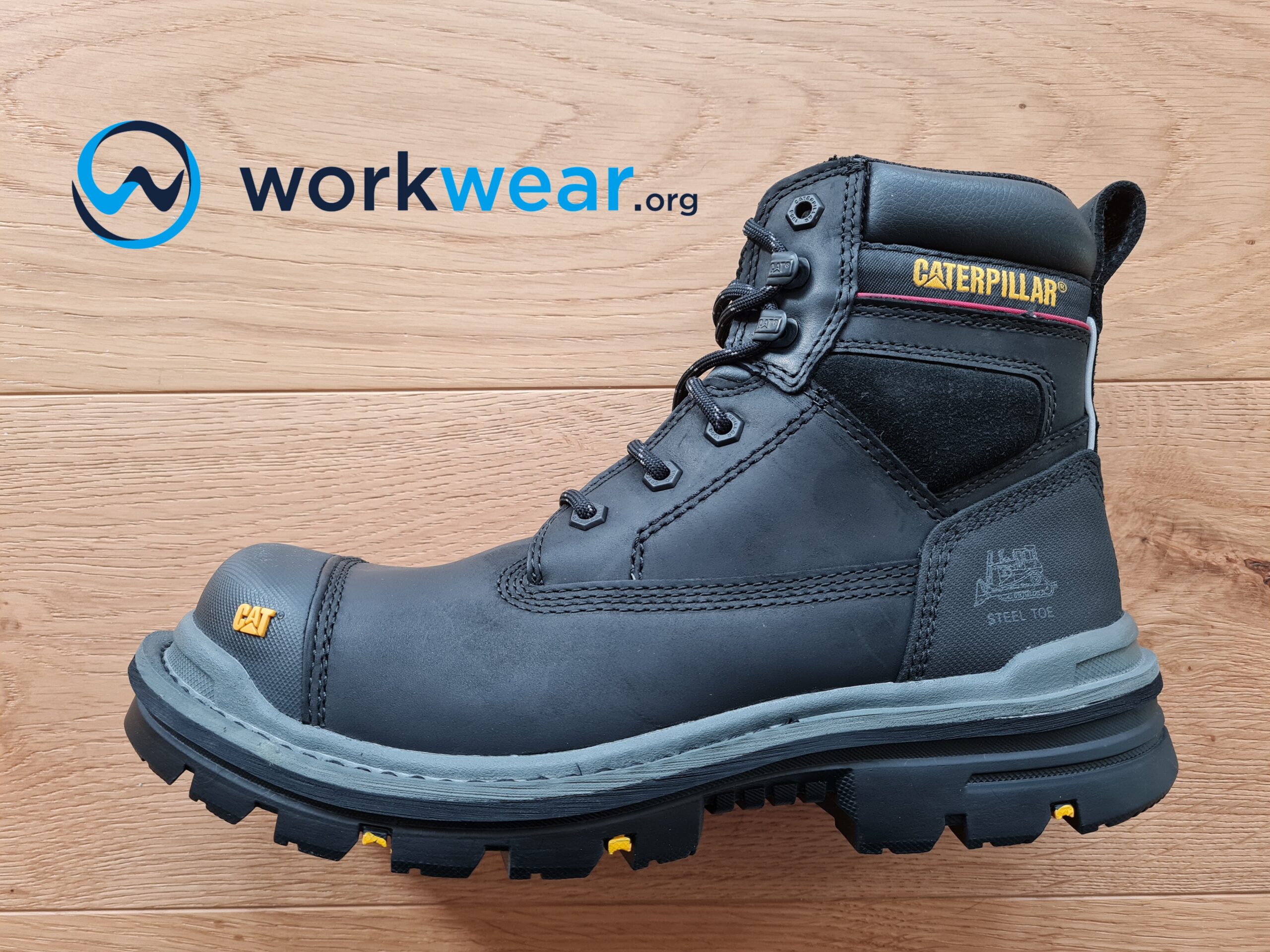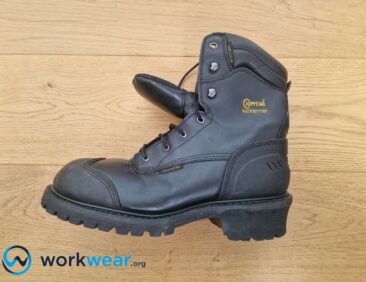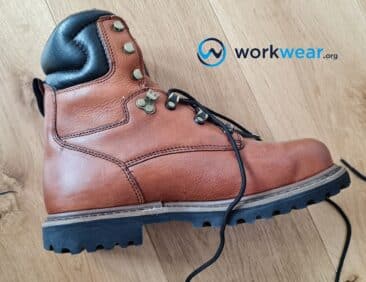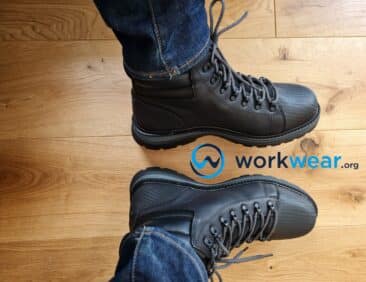Materials Used In Work Boot Outsoles
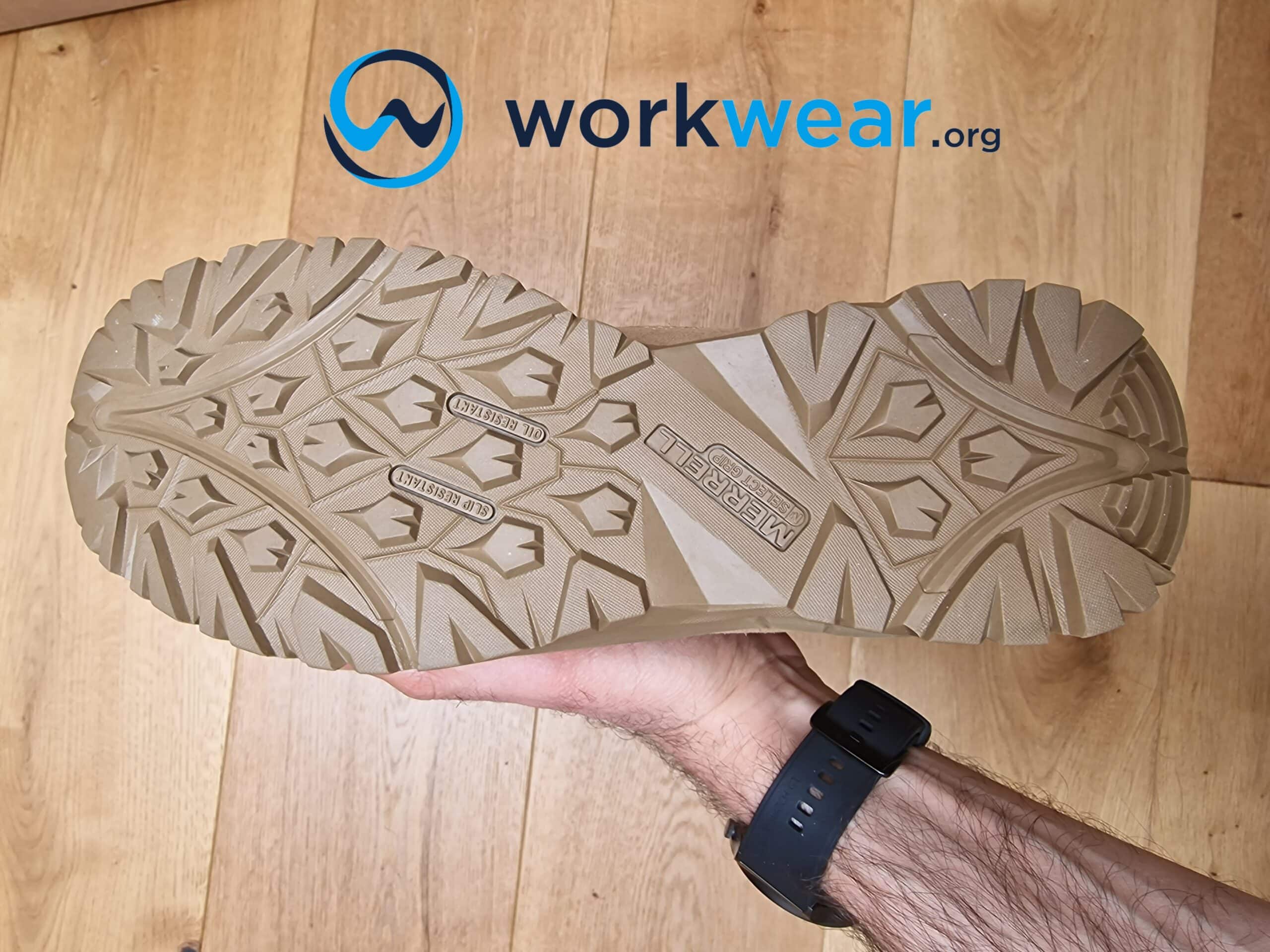
The outsole is the work boot’s supportive platform and comes in several material options. When choosing the outsole material, it’s important to consider the work setting to help determine which material – and the corresponding traction level – will perform best. Comfort is also affected by the material used for the outsole, so it’s crucial to choose the right one, especially for professions that involve all-day walking or staying upright. This article will discuss the different materials used for outsoles, making it easier to determine which one delivers the greatest advantages for your specific workplace requirements.
Different Materials Used for Work Boot Outsoles
Rubber
Rubber is commonly used for work boot outsoles. Its strong structure creates a robust platform that supports the feet and exudes a bold appearance matching the heavy-duty work boot construction. Rubber outsoles often have aggressive treads that offer superior traction, biting into the ground to maintain steady steps over challenging terrains. They have high resistance to liquid and oil penetration, preventing these materials from seeping in from the surrounding surfaces to ensure long-lasting foot dryness while preventing premature deterioration. Strong rubber outsoles absorb the shock from walking on hard surfaces for long periods, protecting the feet against fatigue.
Pros
- Durable
- Strong traction
- Shock absorbing
- Resistant to water and oil
Cons
- It may be too thick or heavy
Professions/Jobs Ideal For
- Electricians
- Construction workers
- Plumbers
- Carpenters
- Industrial workers
Leather
Leather outsoles are ideal for dress boots because they don’t have the aggressive look of rubber soles. They’re much thinner than rubber outsoles, giving the boots a classy appearance that is typically suitable for formal office and going out. Their flexibility doesn’t hamper movement, so it’s quite easy to walk comfortably with work boots with leather soles. These soles conform to the foot’s shape and develop a customized fit the longer the boots are used. Leather soles are often comfortable out of the box and don’t need to be broken in, so the wearer can immediately enjoy their flexibility.
Pros
- It prevents pain
- It can deliver increased rebound
Cons
- It makes the work boot pricier
- Stylish appearance
- It follows the foot’s shape for superior comfort
- Flexible
- Some types can last long
Professions/Jobs Ideal For
- Retail sales staff
- Administrative personnel
- Teachers
- Dining service personnel
- Jobs in office settings
Crepe
Crepe soles have a distinctively sponge-like texture that makes work boots stand out. They give the boots a stylishly casual look, especially since crepe soles often have light-colored structures that contrast quite nicely with the richer color of the boot’s upper. Their appearance makes them suitable for office settings with informal dress codes, with crepe-soled boots such as Clarks Desert Boot going well with chinos and jeans. The crepe material is soft, so these outsoles cradle the feet with welcome cushioning to prevent fatigue. Meanwhile, the flexible structure adapts to the foot’s movements, making walking easier and more comfortable. Crepe outsoles are much lighter than other sole styles, helping boots maintain their reduced weight profiles that won’t painfully weigh the feet down. They’re sustainably sourced from rubber trees and are biodegradable.
Pros
- Flexible and soft
- Lightweight
- Casual, stylish appearance
- Sustainably sourced and biodegradable
Cons
- Easily gets dirty
- Weak traction
Professions/Jobs Ideal For
- Sales staff
- Food service personnel
- Office administration staff
- Jobs in casual/informal work environments
Wedge
Wedge soles have a larger (flat) surface area in contact with the ground. Unlike other work boot soles, wedge outsoles don’t have heels but still boost the height as the back portion is slightly thicker than the front. Their structures are designed to deliver reliable impact absorption as they soak up the impact and dissipate the shock instead of keeping it focused on one area. The wedge sole often has a softly cushioned profile to ward off the pain of all-day walking while supporting the feet simultaneously. Work boots with wedge soles have a more relaxed aesthetic and aren’t aggressive looking like heavy-duty work footwear, making them ideal for workplaces with casual or informal dress codes.
Pros
- Impact absorbing
- Boosts height
- Casual style
- Versatile
Cons
- Weak traction
- It may not be as durable as rubber soles
Professions/Jobs Ideal For
- Electricians
- Plumbers
- Warehouse staff
- Delivery personnel
- Retail sales staff
EVA
The lightweight structure of EVA makes it a popular material for sports footwear and work boots’ soles. Hence, boots with EVA soles can be used for long periods without discomfort, which can be a problem with weighty footwear. EVA soles, such as the one fitted into the Wolverine Tarmac Boot, are flexible and allow the feet to move as freely as possible since they don’t have the stiffness that can restrict agile movements. Their softness cushions the impact of walking on unyielding surfaces, protecting the feet against fatigue after extended hours of boot-wearing. They also help regulate the temperature by keeping the feet warm in cold environments and promoting a cool sensation in hot surroundings. EVA soles have a good grip on most surfaces but aren’t suitable for extremely harsh terrains.
Pros
- Soft and flexible
- Lightweight structure
- Good grip
- Offers good insulation
Cons
- It can easily deteriorate with extensive use
- No for harsh terrains
Professions/Jobs Ideal For
- Kitchen staff
- Food service personnel
- Sales staff
- Delivery staff
- Warehouse workers
PU
PU (polyurethane) outsoles offer a comfortable walking experience as they’re soft enough to cradle the feet with welcome cushioning, absorbing most of the force that results from continuous steps on unforgiving surfaces. They’re much softer and flexible compared to rubber outsoles, making the boots adapt to the feet’s movements without the awkward and painful feeling that can come from stiff soles. PU has a low-profile structure that doesn’t add a lot of bulk to work boots, keeping their weight minimized so they don’t feel painfully heavy even after hours of walking. PU outsoles are built to keep up with tough activities and work environments without getting damaged. They won’t easily allow liquid substances into the boots, ensuring all-day foot comfort and dryness while in wet job areas.
Pros
- Soft and flexible
- More lightweight than rubber
- Shock absorbing
- Strong traction
- Durable and highly resistant to liquids
Cons
- It turns inflexible and brittle after extensive use
Professions/Jobs Ideal For
- Construction workers
- Carpenters
- Warehouse personnel
- Manufacturing staff
- Industrial workers
TPU
TPU (thermoplastic polyurethane) outsoles offer the best features of PU soles with a few additional benefits. First, they’re superbly flexible, so walking on these soles doesn’t cause mobility issues as they easily adapt to the feet’s motion and don’t feel painfully stiff. Second, the abrasion-resistant material prevents cracking and structural damage when exposed to abrasive materials in hazardous work conditions. Third, TPU outsoles are highly resistant to chemicals and most oils, so they won’t disintegrate when exposed to these harsh substances that sometimes cannot be avoided in certain job areas. Finally, the grippy TPU material offers strong traction, keeping the work boot planted firmly on the ground to promote a stable, safe walking experience.
Pros
- Remarkable flexibility
- High resistance to chemicals and oils
- Abrasion resistant
- Strong traction
Cons
- It gets damaged when stored for long periods
Professions/Jobs Ideal For
- Oil & gas industry workers
- Construction workers
- Plumbers
- Carpenters
- Manufacturing industry personnel
Vibram
Vibram soles are built using a unique combination of rubber compounds to deliver maximum traction in different surface conditions. These soles are widely preferred because of their strong grip on the ground, promoting safer walking without compromising efficient workplace movement. In addition, their durable structures are designed to keep up with challenging tasks and worksites, resisting premature damage even with extensive boot-wearing. Vibram soles have different structures – some have low-profile designs, like the Vibram 430 Mini-Lug on the Red Wing Heritage Iron Ranger Boot that doesn’t look as tough as those seen on heavy-duty work boots. In addition, Vibram partnered with work boot manufacturers to develop proprietary outsoles, such as the Vibram TC5+ on the Merrell Moab 2 Tactical Boot.
Vibram soles are built using a unique combination of rubber compounds to deliver maximum traction in different surface conditions. These soles are widely preferred because of their strong grip on the ground, promoting safer walking without compromising efficient workplace movement. In addition, their durable structures are designed to keep up with challenging tasks and worksites, resisting premature damage even with extensive boot-wearing. Vibram soles have different structures – some have low-profile designs, like the Vibram 430 Mini-Lug on the Red Wing Heritage Iron Ranger Boot that doesn’t look as tough as those seen on heavy-duty work boots. In addition, Vibram partnered with work boot manufacturers to develop proprietary outsoles, such as the Vibram TC5+ on the Merrell Moab 2 Tactical Boot.
Pros
- Strong traction
- Aggressively lugged styles promote enhanced stability
- Durable
Cons
- Typically, more expensive than rubber
Professions/Jobs Ideal For
- Landscape workers
- Heavy machinery operators
- Construction workers
- Plumbers
- Warehouse personnel
Nitrile Rubber
Nitrile rubber outsoles grip different surfaces strongly, making walking easier in unstable or slippery conditions while maintaining steady steps simultaneously. The material doesn’t disintegrate when exposed for up to 1 minute to high temperatures that may reach 300° C, making work boots with nitrile rubber soles ideal for exceptionally hot work environments. These boots are also suitable for tasks involving exposure to hot elements, such as those that welders can encounter. Nitrile rubber is more resistant to oils and acids, so the outsoles don’t easily get damaged with exposure to these harsh substances.
Pros
- Heat resistant
- Higher resistance to oils and acids (compared to rubber)
- Strong grip
Cons
- A bit stiff
Professions/Jobs Ideal For
- Welders
- Engineers
- Carpenters
- Firefighters
- Oil & gas industry workers
Outsole Materials & Work Conditions Table
| Material |
For What Work Conditions |
|---|---|
| Rubber |
|
| Leather |
|
| Crepe |
|
| Wedge |
|
| EVA |
|
| PU |
|
| TPU |
|
| Vibram |
|
| Nitrile Rubber |
|
Conclusion
Outsoles play a key role in maintaining a stable walking experience across different surfaces. Knowing the materials commonly used for the work boots’ outsoles will, in turn, make it easier to determine which ones can provide the most benefits in specific job settings. Choosing work boots with appropriate outsoles results in more confidence to walk over challenging ground conditions without compromising safety. At the same time, the right outsole material can also improve comfort and efficient movements in the workplace.
